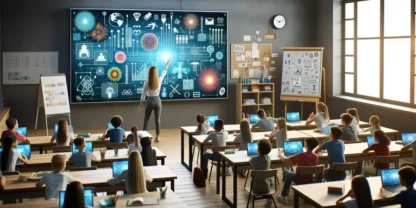Every day, thousands of students across the nation are progressing through lesson plans to develop skills aligned with state standards. Although teachers often have progress visibility using classroom tools such as online dashboards, accumulated growth is not always as evident to the students. In observing the creative ways teachers incorporate eSpark into their classroom routines, we’ve noticed that successful classrooms consistently display visual charts for tracking student progress.

Visual representations of growth help students feel pride when they complete a project or lesson. Sharing data and performance information matters, and the “practice is most effective as an ongoing part of a classroom culture in which students are always collecting and analyzing information in order to improve,” states Mindshift in an excerpt from “Leaders of Their Own Learning: Transforming Schools Through Student-Engaged Assessment.” Looking for creative ways to develop new classroom tools to outwardly display student progress? Check out four real examples below from classrooms in Michigan, Chicago, and New York.
4 Charts for Tracking Student Progress
In the Michigan example below, a door is placed above each student’s light bulb to represent every ten doors the student unlocked in eSpark (a door is unlocked at the end of each quest to allow students to move on and conquer their next standard).
![]()
Similarly, in another Michigan Kindergarten classroom, teacher Hilary Speshock created a visual with ice cream cones to display progress (seen below). When students can see how much they have accomplished throughout the year and receive fun rewards like ice cream scoops for working hard, it encourages them to stay focused and continue working toward their personal academic goals.
![]()
In one Chicago classroom, the teacher’s tracking classroom tools include a more detailed description about what each student is currently working on. Next to each student’s name on the progress board is (1) a list of goals they plan to accomplish that year, (2) a space for them to physically post what skill or task they are attempting to master, and (3) an exit ticket.
The list of quests provides a space for students to record their pre- and post-quiz scores, creating an opportunity for them to track their own assessment growth. At the end of each day, students use post-it notes as exit tickets to report back what they learned to the teacher. This method of tracking student progress holds students accountable for their daily comprehension as they are motivated to be on-task and fully engaged in their learning.
![]()
In the last example, New York teacher Michele Casale created a chart in the shape of an iPad for her classroom this fall. Like you saw in the first example, each student is represented with a light bulb on the iPad. For every eSpark quest completed, students receive a key to place above their name to symbolize another unlocked door. Ms. Casale advocates for tracking student progress in this way as the keys are very equal and attainable rewards for everyone in her classroom given eSpark’s differentiated instruction delivered on each student’s level.
![]()
Many variations of classroom tools and visual trackers can be effectively implemented in classrooms of all grade levels to encourage daily student progress that leads to strong academic gains.
Increase student progress in your classroom today for free! Click here to get started.



